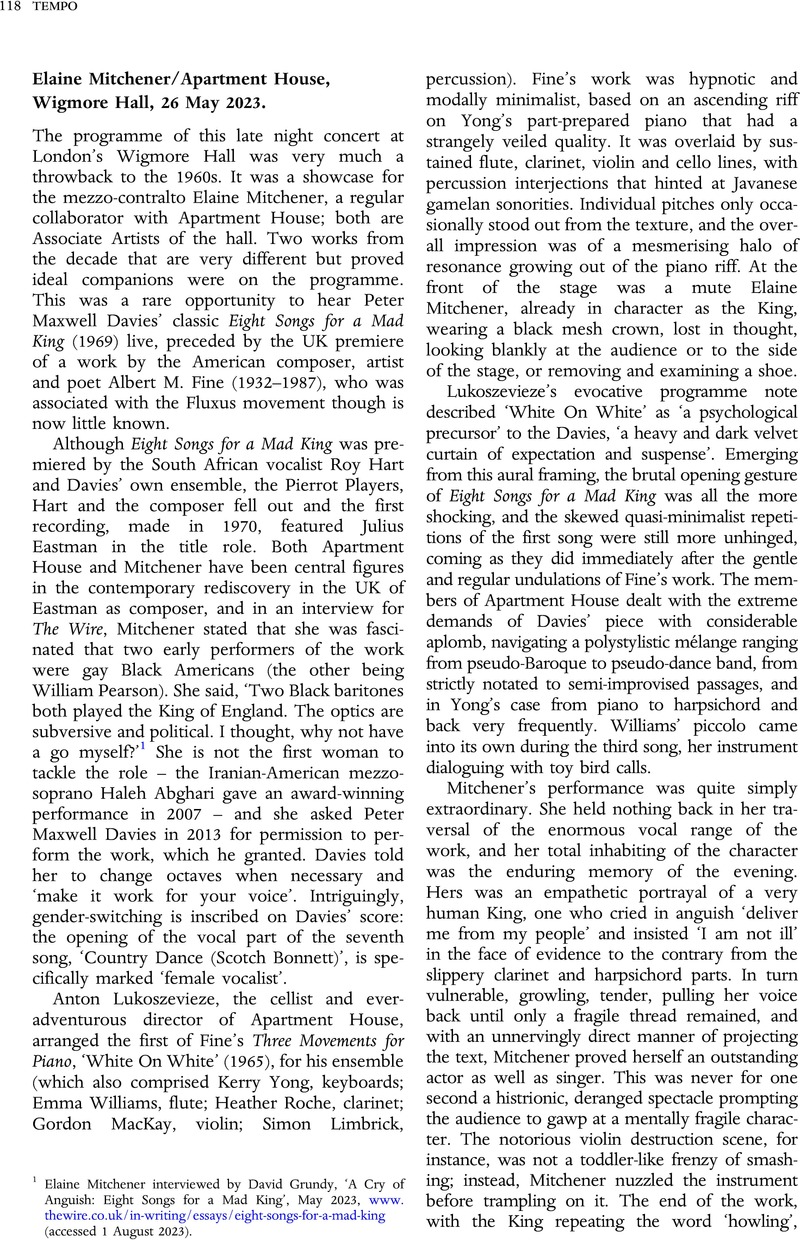No CrossRef data available.
Article contents
Elaine Mitchener/Apartment House, Wigmore Hall, 26 May 2023.
Published online by Cambridge University Press: 01 September 2023
Abstract
An abstract is not available for this content so a preview has been provided. Please use the Get access link above for information on how to access this content.

- Type
- FIRST PERFORMANCES
- Information
- Copyright
- Copyright © The Author(s), 2023. Published by Cambridge University Press
References
1 Elaine Mitchener interviewed by David Grundy, ‘A Cry of Anguish: Eight Songs for a Mad King’, May 2023, www.thewire.co.uk/in-writing/essays/eight-songs-for-a-mad-king (accessed 1 August 2023).



